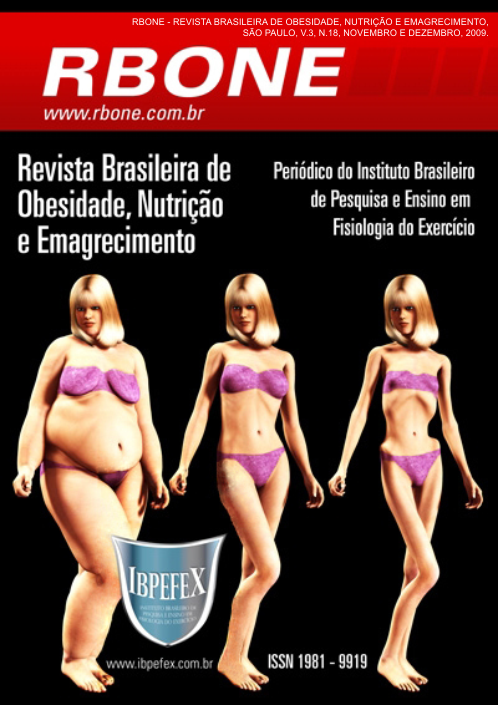The use of green tea in the treatment of emaciation -Systematic review
Abstract
Camellia sinensis (L.) Kuntze is a shrub or small tree of Asia, belonging to the family Theaceae. It is estimated that about 3 thousand kilograms of tea are produced and consumed annually. The purpose of this study is to demonstrate through a literature search the use of the green tea as adjuvant in the process of weight loss. Several studies have shown that green tea, obtained through the fresh leaves of Camellia sinensis grass, have a high amount of flavonoids known as catechins, promoting the reduction of body weight, body fat and assist in the prevention and treatment of obesity and diseases such as dyslipidemia, diabetes and cardiovascular diseases. The researchers concluded thatthe use of green tea provides health benefits, but human studies are still necessary to prove its power in weight loss.
References
-Alterio, A.A.; Fava, D.A.F.; Navarro, F. Interação da ingestão diária de chá verde (Camellia Sinensis) no metabolismo celular e na célula adiposa promovendo emagrecimento. Rev Bras Obes Nut Emag. São Paulo, mai/jun, v. 1, n. 3, p. 27-37, 2007.
-Barleta, V.C.N.; Braga, A.A.A. Alimentos Funcionais: Uma abordagem Terapêutica das Dislipidemias como Prevenção da Doença Aterosclerótico. Cadernos UniFOA, Volta Redonda, ano 2, nº 3, mar 2007.
-Brannon, C. Green Tea: New Benefits from an Old Favorite? Nut Dim, Janeiro, 2009.
-Bianchi, M.L.P.; Antunes, L.M.G. Radicais livres e os principais antioxidantes da dieta. Rev Nutr, Campinas, mai/ago, v. 12, n. 2, p. 123-130, 1999.
-Cuparri, L. Nutrição: Nutrição clínica no adulto. Barueri: Manole, 2002.
-Faria, F.; Santos, R.S.; Wianna, L.M. Consumo de Camellia Sinensis em população de origem oriental e incidência de doenças crônicas. Rev Nutr, Campinas, mar/abr. v. 19, n. 2, 2006.
-Fisberg, M. Atualização em obesidade na infância e adolescência. São Paulo. Editora Atheneu, 2005.
-Freitas, H.C.P.; Navarro, F.O chá verde induz o emagrecimento e auxilia no tratamento da obesidade e suas comorbidades. Rev Bras Obes Nut Emag. São Paulo, mar/abr, v. 1, n. 2, p. 16-23, 2007.
-Giménez, R.; Artacho, R.; Cabrera, C.Beneficial Effects of Green Tea –A Review. Departamento de Nutrición y Bromatología, Facultad de Farmacia, Universidad de Granada, Granada, SPAIN. JAm Coll Nutr, v. 25, n. 2, p. 79-99, 2006.
-Lima, J.D. e colaboradores. Chá: aspectos relacionados à qualidade e perspectivas. Ciência Rural. Mar, 2009.
-Lunaro, K.K.; Pereira, M.F. Avaliação da ingestão de chá-verde (Camellia sinensis Kuntze) em ratos wistar machos obesos. 2007.
-Matsubara, S.; Amaya-Rodrigues, B.D. Conteúdo de miricetina, quercetina e kaempferol em chás comercializados no Brasil. Ciênc Tecnol Aliment, Campinas April/June. v. 26, n. 2, 2006.
-Panza, V.S.P. Efeito do consumode chá-verde no estresse oxidativo em praticantes de exercício resistido. Dissertação, Florianópolis, 2007.
-Prado, C.C.; e colaboradores. Avaliação do teor de polifenóis da Camellia Sinensis (chá verde). Rev Eletr Farm Suple, v. 2, n. 2, p. 164-167, 2005.
-Saldanha, L.A. Avaliação da atividade antioxidante in vitro de extratos de erva-mate (Ilex paraguarienses) verde e tostada e chá verde (Camellia sinensis). USP. FSP. São Paulo, 2005.
-Sousa, A.S.; Kling, M.R.S.; Navarro, F.A importância da orientação e reeducação nutricional no tratamento da obesidade. Rev Bras Obes Nut Emag. São Paulo, set/out, v. 1, n. 5, p. 50-58, 2007.
-Schimitz, W.; e colaboradores. O chá verde e suas ações como quimioprotetor. Cien Bio Saúde, Londrina, jul/dez, 2005; v. 26, n. 2, p. 119-130, 2005.
-Sturmer, J. Comida: um santo remédio. Petrópolis, RJ. Editora Vozes, 2002.
-Tirapegui, J. Nutrição, metabolismo e suplementação na atividade física. Editora Atheneu, São Paulo, 2005.
-Valenzuela, B.A. El consumo te e la salud: Características y propriedades benéficas de esta bebida milenaria. Rev chil nutr, Santiago ago. v. 31, n. 2, 2004.
Authors who publish in this journal agree to the following terms:
- Authors retain the copyright and grant the journal the right of first publication, with work simultaneously licensed under the Creative Commons Attribution License BY-NC which allows the sharing of the work with acknowledgment of the authorship of the work and initial publication in this journal.
- Authors are authorized to enter into additional contracts separately for non-exclusive distribution of the version of the work published in this journal (eg, publishing in institutional repository or book chapter), with acknowledgment of authorship and initial publication in this journal.
- Authors are allowed and encouraged to post and distribute their work online (eg, in institutional repositories or on their personal page) at any point before or during the editorial process, as this can bring about productive change as well as increase impact and impact. citation of published work (See The Effect of Free Access).






